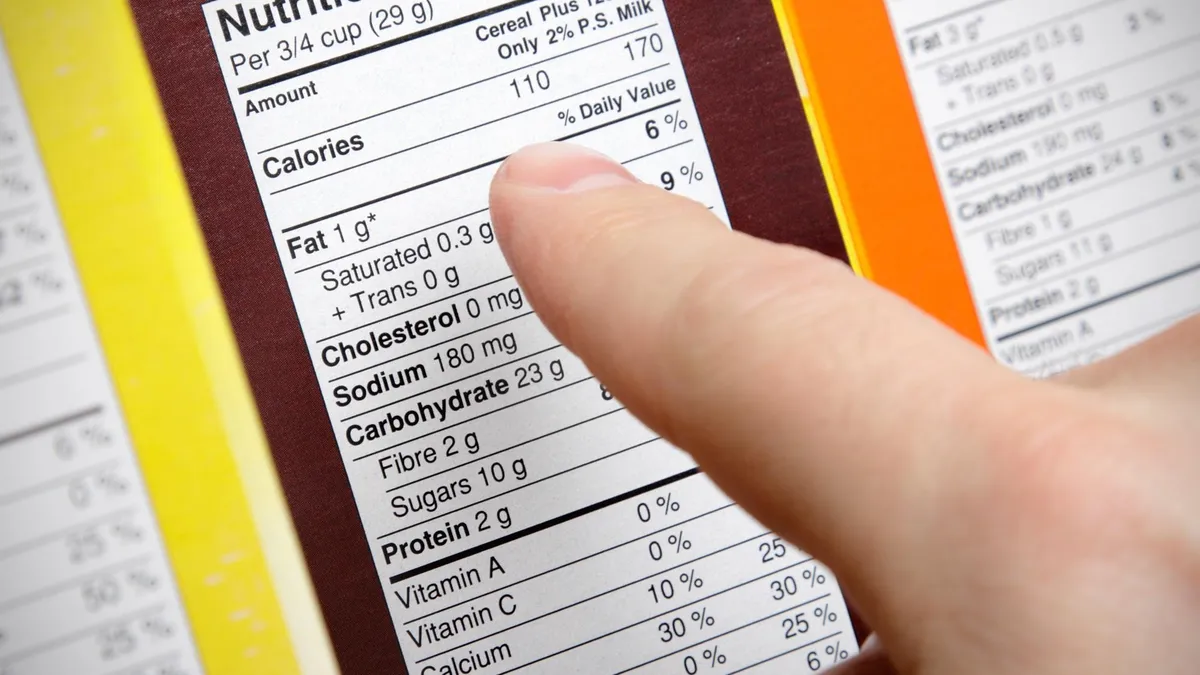Get Support
123-456-789-10
How much can you understand food labels?

Food packaging is really deceptive, are you easily influenced by product packaging?
If someone asked you, do you read food labels when you shop? What is your answer?
Many people don't check food labels when shopping.
So what are food labels? How do we check food labels when shopping?
Food labels usually mark the production date, shelf life, ingredients, quality (quality) grade, etc. of the food, which can tell consumers whether the food is fresh, product characteristics, nutritional information, etc.
All prepackaged foods must have food labels, which is not only the need to achieve food safety and scientific management, but also an objective requirement to protect the rights and interests of consumers.
What should we pay attention to on the food label when purchasing in the supermarket?
1 Look at the date 2 Look at the name, category 3 Look at the ingredient list 4 Look at the nutritional content list
Today I will teach you how to recognize food labels, and never be fooled by food packaging again!
First of all, the production date and shelf life. These are the most basic
Second, look at the name and category: for example, the difference between yogurt drink and yogurt is really too big! One is a beverage, and the other is yogurt fermented by lactic acid bacteria. Don't think that adding the word "milk" means a dairy product. It is actually a beverage.
So here at Dajing, I would like to remind everyone that you must see clearly whether you are buying milk or beverages.
The easiest way to tell the difference is to look at its full name. Lactic acid drinks can only play around the edges at most, and they don’t dare to imitate cats and dogs in terms of full names. The second is to look at the food ingredient list. Generally, milk drinks that are common in the market, such as yogurt drinks, nutrition express, daily live bacteria, etc. are all milk drinks!
Look at the ingredient list: Friends often ask me what to look for when I buy something. Of course, I look at the ingredient list. If you don’t look at the ingredient list, how do you know what it is made of? You must know that there is a lot of knowledge in the ingredient list.
First of all, we can see it in the general ingredient list: conventional ingredients, food additives, etc. The regular ingredients are the main ingredients of what you drink, and the various ingredients are arranged in descending order of the amount added.
Regarding food additives, we advocate eating fresh, green and healthy food, but in our lives, secondary processed packaging products are also inevitable. As long as they are processed and packaged, there will definitely be food additives, and it is delicious to eat occasionally. And food additives are not a big problem within the scope of the national license, so you know
The nutritional composition table must be read, through which we can know the calories of this bag of food (including the content of fat, protein, and carbohydrates), as well as the content of some vitamins, minerals, and sodium.
Look at the nutritional content list, first of all you need to understand that its remarks are the protein, fat, and carbohydrate content per 100g. If this bag of product is 200g, you need to perform a simple calculation. Secondly, the energy is generally in kilojoules, calculated as: 1 kcal=4.184kj.
In the end, the invisible calorie bomb in food, have you been recruited?
First of all, let’s start with fat. Dajing has always suggested that everyone should consume a certain amount of high-quality fat every day, whether it is obtained from olive oil or nuts, and avoid some bad fats as much as possible. And these packaged foods often encounter bad fats, such as trans fatty acids
What are trans fatty acids? Let's get to know each other
Like cocoa butter substitute, vegetable cream, vegetable butter, margarine, hydrogenated vegetable oil, hydrogenated fat, refined vegetable oil, hydrogenated vegetable oil, hydrogenated palm oil, shortening, margarine, non-dairy creamer, vegetable ghee, etc.
Many breads and biscuits on the market contain hydrogenated vegetable oil, margarine and other ingredients, and these are all trans fatty acids. Therefore, it is recommended that you pay more attention to food labels when purchasing, and try to choose whole wheat bread or European bread containing nuts in the choice of bread.
Secondly, the invisible intake of too much sugar is also the main reason for the inexplicable excess of calories. Many of the foods you buy have white sugar added, and the staple food carbohydrates we usually eat are essentially sugar, which is converted into glucose after digestion to provide energy for the human body. Therefore, whether you are consuming fructose or glucose, avoid excessive intake.
Food packaging is really deceptive, are you easily influenced by product packaging?

 By: 创始人
By: 创始人
